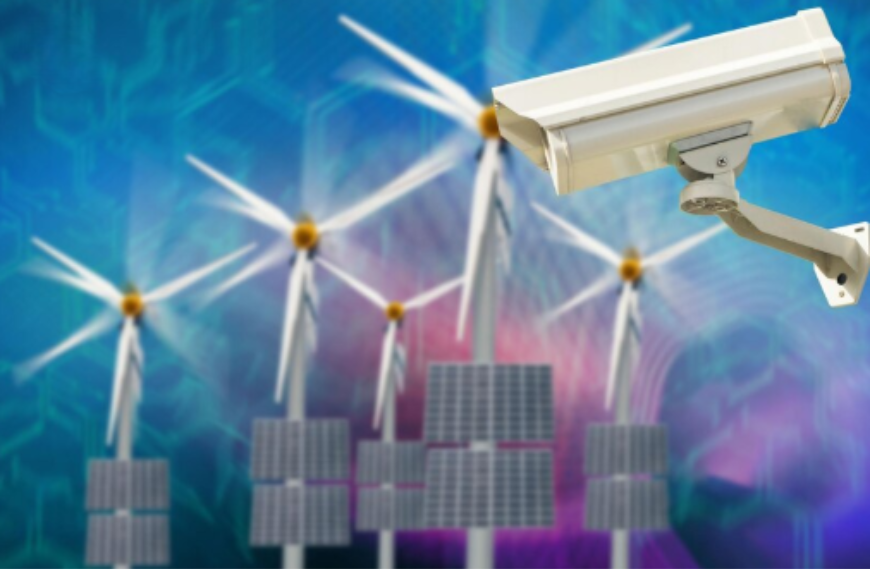
In today’s environmentally-conscious world, sustainability is no longer a choice—it’s a responsibility. Security systems and strategies, often overlooked in green initiatives, are now stepping into the spotlight. By adopting environmentally responsible practices in our security operations, we not only reduce our carbon footprint but also create smarter, more cost-effective systems.
Here are five powerful strategies for integrating eco-friendly practices into your security approach—each designed to preserve resources, reduce waste, and keep your premises protected without compromising the planet.
1. Switch to Energy-Efficient Security Systems
Traditional security systems often consume excessive electricity, especially when running 24/7. By upgrading to energy-efficient technologies, we can make a significant environmental impact.
Modern security solutions such as LED-powered floodlights, solar-powered CCTV systems, and low-voltage alarm systems consume far less energy than outdated models. LED lights, for example, use up to 80% less energy and last significantly longer than halogen bulbs. Motion-sensor lighting can further minimize energy consumption by activating only when needed, making surveillance smarter and greener.
Another aspect is the use of PoE (Power over Ethernet) cameras, which use a single cable to deliver both power and data—reducing cable clutter, electrical waste, and simplifying installation.
2. Implement Smart Surveillance and AI-Based Monitoring
Embracing AI-powered surveillance technology isn’t just a leap in security sophistication—it’s a move toward greener operations. Smart surveillance systems can analyze video feeds in real time, reducing the need for large teams monitoring screens constantly.
These systems also allow automated alerts and remote monitoring, which reduces energy used in physical patrolling or unnecessary lighting. Cloud-based storage solutions reduce reliance on energy-intensive on-site servers, cutting both power use and maintenance costs.
Moreover, AI software optimizes video resolution and recording time, ensuring storage efficiency and minimal redundancy—resulting in a lower carbon footprint for data centers and reduced electricity demand.
3. Go Paperless with Digital Access Control and Records
One of the most overlooked sustainability practices in security operations is eliminating paper waste. Traditional access logs, visitor sign-in books, incident reports, and training manuals often rely on reams of paper.
By shifting to digital access control systems and cloud-based documentation, we dramatically cut down on paper use and promote seamless integration. Employees and visitors can check in via smartphones or biometric systems, and incident reporting can be handled through mobile applications or digital dashboards.
We also recommend using QR-code-based visitor badges and mobile credentials, reducing the need for plastic cards or printed passes, further contributing to a zero-waste policy.
4. Choose Eco-Friendly Guarding Practices
Security guarding can also align with green practices when implemented thoughtfully. First, we train our personnel in sustainable operations, encouraging walking patrols over vehicle-based ones, especially in campus environments or residential areas.
For vehicle-based security, we prioritize electric or hybrid patrol vehicles, reducing fuel consumption and emissions. Incorporating bicycle patrols where possible is not only energy-efficient but also promotes health and wellness.
We also focus on eco-conscious uniforms and gear, sourcing from suppliers who use recycled materials and low-impact dyes. Security personnel are also encouraged to reduce plastic use, such as avoiding bottled water and using reusable gear during shifts.
5. Reuse, Recycle, and Upgrade Instead of Replacing
Security infrastructure can be expensive and environmentally taxing to replace. A sustainable approach involves upgrading existing systems instead of replacing them entirely.
We assess current systems to determine what components—cameras, cables, sensors—can be retrofitted or repurposed. Older hardware can often be upgraded with new software or integrated with smarter interfaces to improve functionality without additional waste.
Additionally, we partner with certified e-waste recycling vendors to dispose of unusable components responsibly. Batteries, old circuit boards, and metal from mounting hardware can all be safely recycled rather than ending up in landfills.
We also follow a buy-back program for old equipment and encourage suppliers who offer green-certified hardware, ensuring that every product lifecycle is as sustainable as possible.
Conclusion: Security That Respects the Planet
A green security strategy is no longer a futuristic ideal—it is the new standard. By implementing energy-saving systems, leveraging AI for smarter monitoring, eliminating paper processes, adopting eco-conscious guarding methods, and recycling old infrastructure, we ensure that our commitment to security goes hand-in-hand with our responsibility toward the environment.
We believe that sustainability enhances operational efficiency and strengthens brand reputation. Businesses that prioritize green security solutions are more likely to appeal to environmentally-aware clients, reduce operational costs, and future-proof their operations.Going green with your security strategy is not just about saving energy—it’s about building trust, protecting what matters, and doing it with integrity.
